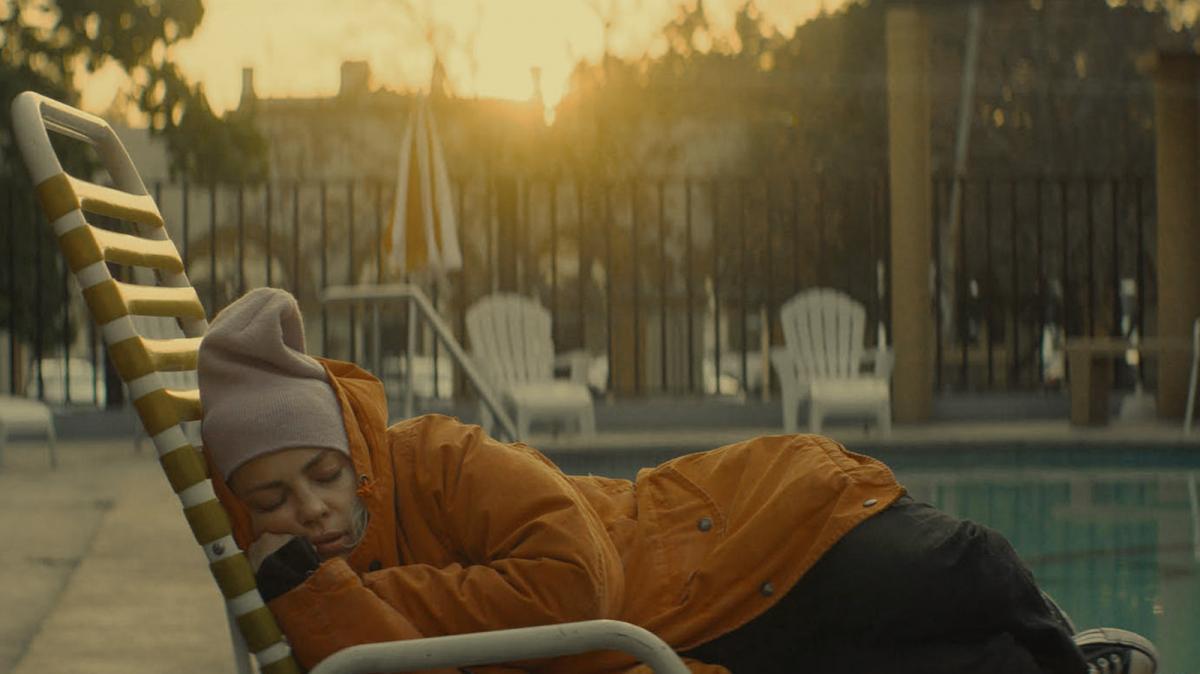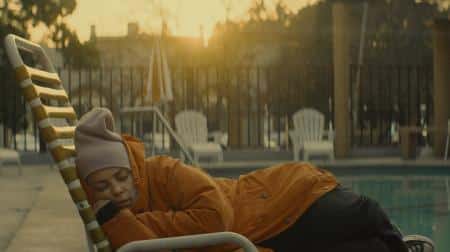 Surprising, for being a debut, the great handling in the direction of the camera from the first scene, with a zenith that becomes an American sequence. / Photo: Press
Surprising, for being a debut, the great handling in the direction of the camera from the first scene, with a zenith that becomes an American sequence. / Photo: Press
The third day of the Bafici International Competition showed “Blondi”, the long-awaited first film by Dolores Fonzi, who had a loud crowd in room 1 at Gaumont, and “Una claustrocinefilia”, a short Italian documentary by Alessandro Aniballi that, Through intrigue, he delves into the paranoia of a film critic locked in his apartment.
Fonzi’s film was in charge of closing Saturday night in a packed Leonardo Favio room, with an audience that applauded as much as they could and that sold out in just an hour and a half since they went on sale online. .
happy, the actress, debutant in directing, was accompanied by her partner and producer of the film, Santiago Miterand a cast headed by herself, Carla Peterson and Toto Rovito, as well as colleagues like Joaquín Furriel and Mex Urtizberea.
The film, with a lot of self-reference -according to Fonzi in the presentation-, narrates the daily life of a young mother and her son entering the age of 20, who live as friends: they share tastes, consume marijuana, go to recitals and drink alcohol .
The film, with a lot of self-reference -according to Fonzi in the presentation-, narrates the daily life of a young mother and her son entering the age of 20, who live as friends: they share tastes, consume marijuana, go to recitals and drink alcohol
The only difference that can be seen between the two is that Mirko (Rovito) lives his age with a view to the future, while she, Blondi, finds herself anchored and without any kind of remorse, in an adolescence that seems to never end. One can intuit in this the birth of Mirko when his mother was 15 years old.
Although Blondi also serves as an anchor for her sister’s ravings, trapped in an upper-middle-class routine from which she wants to escape. Thus, the protagonist becomes the anti-stereotype in which responsibility and debauchery can coexist.
Surprising, for being a debut, the great management in the direction of the camera from the first scene, with a zenithal that transforms into an American sequence. Also the good decision he made in the photography and art design of the film. However, there is a lack of taste in the development of some characters, who perhaps had more material to cut, such as that of the sister (Carla Petersen) and her husband (Leonardo Sbaraglia) or in the Mirko-Blondi relationship. A separate paragraph deserves the exceptional work of Rita Cortese, providing essential stitches to pull the comedy.
Earlier, “A claustrocinephilia” was screened. Alessandro Aniballi, its director, is a film critic on the Quinlan portal and, like almost everyone else, was surprised by the confinement of the pandemic in 2020. Once the film has started, one already snorts when thinking: “Another documentary about the quarantine and someone who believes that he is the only one that happened to him.” But instantly, Aniballi transforms the most common fact for all humanity since the use of reason to show and demonstrate her love for cinema and what cinema, precisely, gave humanity.
Through cuts from various films (“Appocalypse Now”, “The Big Lebowski” or “Dolce Vita”, among the hundred that pass), this critic and film editor recounts his day-to-day life and the paranoia that he realizes in that moment, they have been after him since he was born. It is a film that will challenge the moviegoer through the number of recognizable images that he will see, but that will transport those who do not feel that passion for the seventh art to a world that is so imaginary, it becomes real.
In addition, it shows some discoveries and tributes from films within films, which in many cases is surprising due to the obsession with which Aniballi works. And, as if that were not enough, he himself is a likeable and even cartoonish character, who behind his unruly hair shows an incipient bald head and eyes as wide as those of someone who fears the world or is watching a movie. nice and attractive, “Una claustrocinefilia” can be seen this Tuesday at 3:00 p.m. in the Leopoldo Lugones Room and on Wednesday at 4:45 p.m. at the Cine Lorca.
“Blondi”, meanwhile, is projected on Monday at 9:15 p.m. at the Cultural San Martín and on Wednesday at 4:50 p.m. at the Alliance Française.


